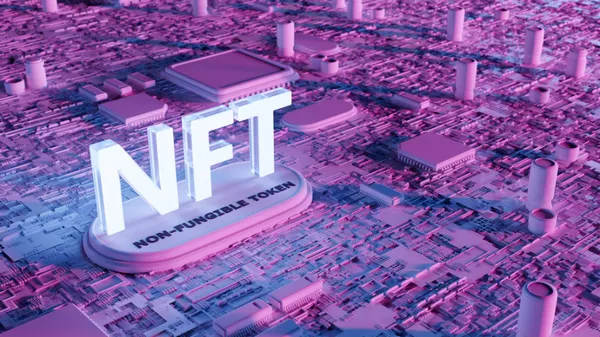The emergence of Non-Fungible Tokens (NFTs) in 2021 marked a transformative moment in the art world, bringing together technology and creativity in unprecedented ways. This article explores the evolution of NFT art in the U.S., examining its meteoric rise, subsequent decline, and the prospects for its future.
The Rise of NFT Art
In 2021, NFT art emerged as a revolutionary force, offering digital artists a new platform to showcase and monetize their work. NFT marketplaces such as OpenSea, Rarible, and Foundation became pivotal in this digital art revolution, allowing creators to tokenize their art on the blockchain. This technology ensures the authenticity, provenance, and scarcity of digital artworks—key elements that resonate with the art community.
A landmark moment was the sale of Beeple’s “Everydays: The First 5000 Days” for a staggering $69 million at Christie’s auction. This sale not only garnered media attention but also cemented NFTs in the public consciousness, attracting interest from celebrities, brands, and traditional art institutions.
American artists like Pak, XCOPY, and Trevor Jones gained prominence by leveraging the NFT medium. Pak’s limited-edition digital works captivated collectors, while XCOPY’s dystopian animated GIFs carved out a niche for digital narrative art. Trevor Jones blended traditional painting with digital techniques, highlighting the fusion of old and new art forms.
The NFT Craze: Prosperity and Pitfalls
Despite early successes, the NFT art market experienced a sharp downturn by late 2021 and into 2022. The speculative nature of many NFT transactions led to an unsustainable market bubble. As digital art prices fell, speculative buyers withdrew, leaving many artists with unsold works and uncertain futures.
Environmental concerns also came to the forefront, particularly related to Ethereum’s proof-of-work system. The high energy consumption required for mining Ethereum raised ethical questions about the sustainability of NFTs.
The broader volatility of cryptocurrencies further exacerbated the NFT market’s instability. As crypto valuations plummeted, NFT prices followed suit, leading to a significant decline in collector interest. This period, often referred to as the “bear market” for NFTs, reflected a shift from speculative frenzy to market correction.
The Current State of the NFT Art Market
By 2023, the NFT art market had evolved from its speculative peak to a more nuanced and introspective phase. While interest in NFTs remains, the market has shifted from hype-driven sales to more sustainable practices. Marketplaces are now focusing on community-building and quality over quantity.
Artists such as Mike Winkelmann (Beeple) continue to explore new narratives around digital identity and ownership. Emerging artists are also finding their footing in a more mature market. Platforms like SuperRare and Nifty Gateway have pivoted to curating high-quality collections, fostering deeper engagement between artists and collectors.
The Future of NFT Art in the U.S.
Looking ahead, the future of NFT art in the U.S. holds promise despite the challenges faced. Web3 technologies, including blockchain and smart contracts, offer artists greater control over their work and earnings. Collaborative practices are emerging, blending art with music, games, and virtual reality to create immersive experiences.
Educational initiatives are likely to play a crucial role in shaping the future of NFT art. By providing frameworks for understanding blockchain technology and digital ownership, educational institutions can help mitigate risks and promote informed participation in the NFT space.
The concept of digital collectibles may evolve into long-term investments, much like physical art. While the frenzy of 2021 may not return, a more stable and community-driven market seems to be on the horizon. As digital assets gain legitimacy, NFT art has the potential to redefine artistic engagement and ownership, offering new opportunities for artists and collectors alike.
Conclusion
The journey of NFT art has been marked by extraordinary highs and reflective lows. As technology and cultural consumption continue to evolve, NFT art’s future will depend on the ability of artists, marketplaces, and collectors to navigate and adapt to this new landscape. With a focus on sustainability and community, NFT art is poised to redefine the boundaries of creativity and ownership in the digital age.
Related topics:
Wintermute to Launch Polymarket Competitor with Chaos Labs
SquidGrow Crypto Price Down 18% as Top Coins Seek Gains
Cyber Capital CIO Debunks Solana FUD, Rejects Comparisons to Terra Luna

















